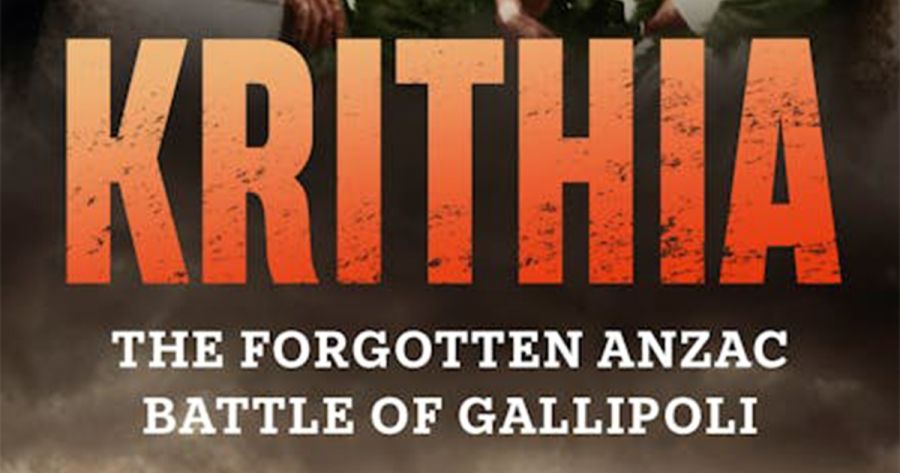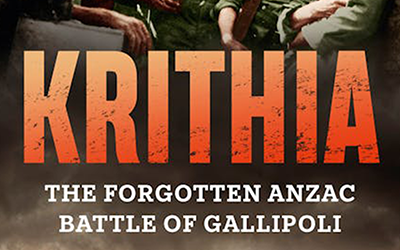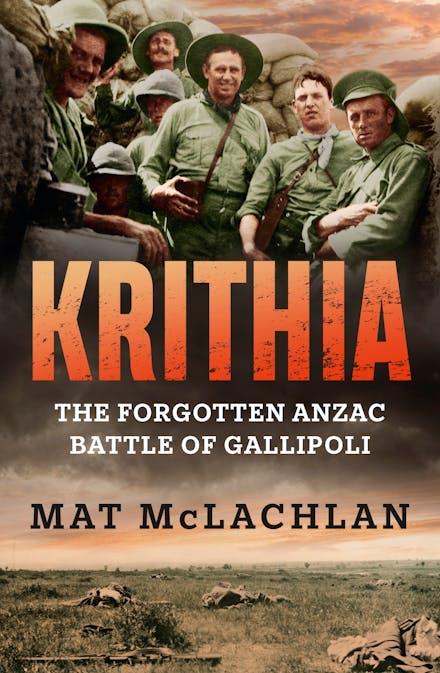
- Free Article: No
- Contents Category: Military History
- Review Article: Yes
- Article Title: Halfway house
- Article Subtitle: A haphazard history
- Online Only: No
- Custom Highlight Text:
The claim of this well-intentioned book is to give an account of the Second Battle of Krithia, which was fought on the Gallipoli Peninsula between 6 and 8 May 1915. However, we do not reach the beginning of the battle until page 187, and it ends on page 257. Thus, we have seventy pages out of 320 on the titular topic of this book.
- Featured Image (400px * 250px):

- Alt Tag (Featured Image): Robin Prior reviews ‘Krithia: The forgotten Anzac battle of Gallipoli’ by Mat McLachlan
- Book 1 Title: Krithia
- Book 1 Subtitle: The forgotten Anzac battle of Gallipoli
- Book 1 Biblio: Hachette, $34.99 pb, 333 pp
- Book 1 Cover Small (400 x 600):

- Book 1 Cover (800 x 1200):

The generals in charge of this debacle, Sir Ian Hamilton and Aylmer Hunter-Weston, must be awarded some kind of medal for buffoonery and incompetence. Of the 2,500 Anzac troops who entered the fight, half were either killed or wounded for no worthwhile gain of ground. McLachlan handles this appalling episode ably. Even those readers inured to World War I fiascos will find these descriptions compelling and disturbing.
What, then, of the remaining 250 pages of the book? The author seems to have been badly let down by his publishers. Was not the manuscript of this book sent to readers who specialise in this field? If that had been the case, surely pruning would have taken place. Instead, we have a book which is really a potted history of the whole Gallipoli campaign. That the largest section of the book has no special insights into that campaign should not be surprising; after all, that is not the author’s subject. It is, of course, indisputable that a book describing a particular battle needs some context. We need to know why it was that Anzac troops operating in the north of the peninsula were brought south to the British/French zone of Gallipoli and why they were flung into battle in such a haphazard way. Regrettably, what we don’t need to know makes up most of the remainder of the book. Thus, among other things, the author tells us the tale of the riots in the redlight district of Cairo, why the Anzac force might have landed in the wrong place, why they did not advance further across the Peninsula because of the deeds of Kemal. Needless to say, all these incidents have been covered well in previous accounts of the Anzac operations. Indeed, some of them have been covered so extensively that they have almost been reduced to clichés. In the case of some (the Wazza riots come to mind), there is an almost desperate need never to read about them again. The overwhelming sense is that these incidents (and there are many others) have no relevance whatsoever to the subject of the book, which, as you may have forgotten, is the Second Battle of Krithia. In short, there is context and then there is padding. Most of this book falls into the second category rather than the first. A better book would have had twenty or thirty pages of useful context, then the battle descriptions, then twenty or thirty pages of conclusions. That would have made a book of about half the size of the existing tome, but a book that could have been read with pleasure and profit.
There are other criticisms that might be made, perhaps more of the publisher than the author. It is no use having the illusion of scholarly apparatus in a book without the reality. Footnotes are a way in which readers can navigate the path followed by the author in constructing the narrative. In turn, these notes can provide a way that readers can investigate these sources for themselves. But what we have here is a halfway house. For example, footnote one of Chapter Seven tells us that the material came from the war diary of the 29th Division for 26 April 1915. Where is this diary? Is it in The National Archives in Kew (as I suspect) or the Australian War Memorial, or somewhere else? And should the archive be tracked down, where precisely would it be found? In fact, each archive has its own numbering system, and each entry therefore has a number. It is that number as well as the location of the archive that is missing here. This renders such footnotes virtually useless. This might seem a small point, but it is not minor if you are a reader frustratingly trying to follow such vague entries. Publishers should know this and be able to guide authors accordingly.
In conclusion, Krithia is a book with a useful core of knowledge, surrounded by well-known Gallipoli stuff, precariously supported by a set of sagging citations. If Mat McLachlan writes another book, and I hope he does, he needs to charge into his publishers armed with these facts and the same determination shown by the Anzacs at Krithia – with, it is to be hoped, a better outcome.


Comments powered by CComment